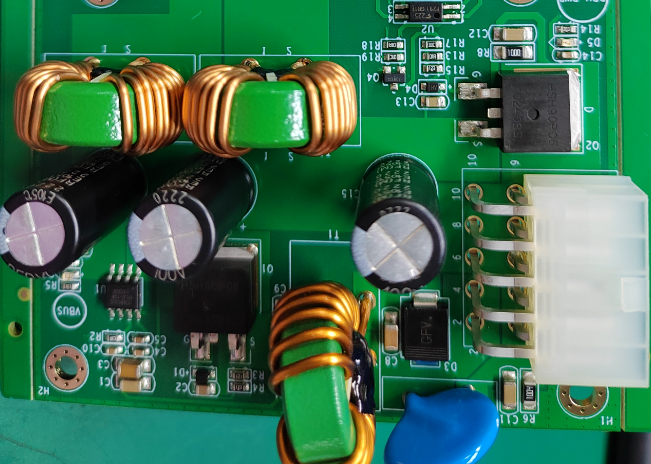In modern electronic equipment, the power module plays a vital role as a core component. It is responsible for converting the input DC voltage into the DC voltage required by various devices. In particular, DC-DC power converters based on switching mode are widely used due to their advantages such as high efficiency, small size and light weight. However, designing an excellent DC-DC power converter is not easy and requires careful consideration and fine tuning in terms of layout, electromagnetic compatibility, current and thermal management.
Introduction to DC-DC power supply applications
1. Introduction to DC-DC application types
DC-DC power supply is the core device for DC voltage conversion, including LDO and other types. Among them, devices implemented in switching mode are usually called DC-DC converters. This type of power supply has the advantages of low power consumption, high efficiency, small size, light weight, high reliability, anti-interference, and wide range output, so it is widely used in the electronic field.
2. Working principle of DC-DC power supply
The working principle of DC-DC power supply involves voltage conversion and regulation, which is mainly realized through the converter of switching power supply. The conversion process includes three main steps: filtering, conversion and adjustment. The switching sequence of the switching tube is controlled through PWM (Pulse Width Modulation) or PFM (Frequency Modulation) to achieve the stability of the output voltage.
Selection of key electronic components
1.Output inductor
To ensure stable current output, the choice of inductor needs to strike a balance between size and response speed. Consider the saturation current to ensure the filtering effect.
2. Voltage dividing resistor
The voltage dividing resistors form a voltage dividing network and feed back the output voltage to the control circuit to achieve precise control of the PWM duty cycle and stabilize the output voltage value. Choose high-precision resistors to ensure circuit accuracy.
3.Input capacitance
When selecting the input capacitor, the equivalent inductance and self-resonant frequency must be considered. By combining them in parallel, it can achieve excellent filtering effects, stabilize the input voltage, and filter out AC components.
4.Output capacitor
The output capacitor is used to filter out switching ripples. The larger the capacitance, the smaller the impedance. Choosing the appropriate output capacitor is crucial to the stable operation of the circuit.
When selecting these core components, various factors need to be considered to achieve the best balance and ensure that the circuit works in an efficient and stable state.

DC-DC power supply layout and wiring recommendations
In order to optimize power supply performance, the switching power supply should be placed close to the chip to avoid voltage drops caused by too long output lines. To reduce electromagnetic interference, avoid arranging sensitive components around the switching power supply. To enhance stability and reliability, factors such as wiring strategy, thickening of ground wires, and heat dissipation design need to be considered.
1. Layout design
- Chip power supply proximity principle: Ensure that the switching power supply that provides voltage to the chip is placed as close to the chip as possible to avoid excessively long low-voltage output lines, reduce voltage drop, and ensure that power supply performance is not affected.
-Avoid electromagnetic interference: Avoid arranging sensitive components around the switching power supply during layout to reduce the impact of electromagnetic interference on the work of components.
- Layout with the power chip as the core: During layout, organize the switching power supply chip as the core component to ensure that there is sufficient distance between the input and output ends of the power filter to prevent noise from coupling from the input end to the output end.

2. Wiring design
-Avoid parallel wires: Try to avoid adjacent parallel wires for input and output ends to reduce unnecessary electromagnetic interference.
-Thick ground wire: Thicken the ground wire between input and output to ensure current stability and reduce feedback coupling.
- Treatment of high-current leads: High-current leads, such as public ground wires, power input/output wires, etc., should be made as thick as possible to reduce wiring resistance and voltage drop, and reduce self-excitation caused by parasitic coupling.
3. Heat dissipation considerations
-Heat dissipation ground area: Since the switching power supply dissipates a large amount of heat, the area of the heat dissipation ground (copper) should be increased as much as possible to ensure effective heat dissipation.
-Large area of copper laying and drilling: The input and output ends should be laid with copper over a large area and drilled with as many holes as possible to meet the current requirements and improve the heat dissipation effect.
If you need selection guidance, sample testing, procurement, BOM ordering, etc., please contact us via the following email address:

